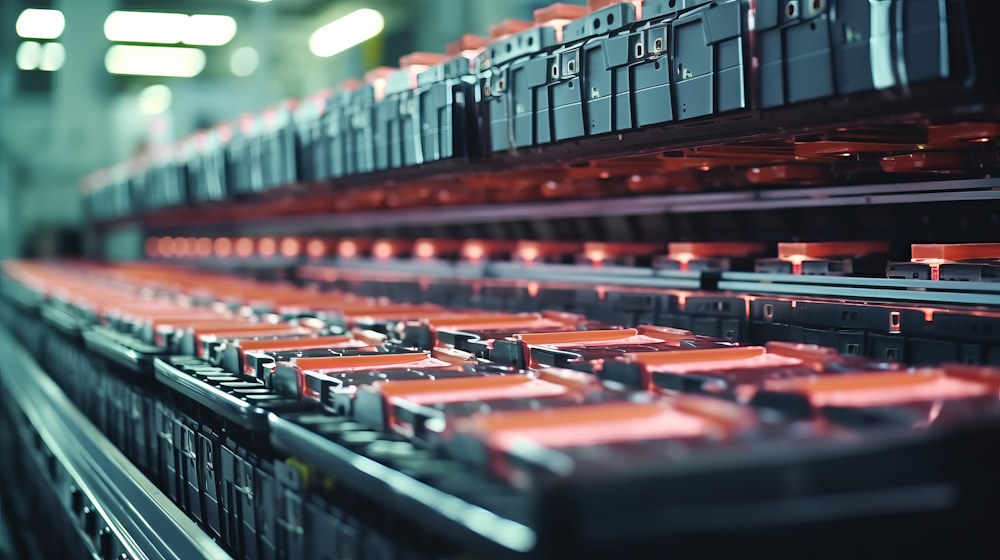Introduction
In the realm of energy storage, one technology has risen to prominence and continues to dominate the market – the lithium-ion battery. Its rapid adoption and widespread use can be attributed to a combination of factors that make it the superior choice among various battery technologies. In this article, we’ll delve into the intricacies of lithium-ion batteries and explore why they stand out as the best choice for a wide range of applications, from portable devices to electric vehicles and renewable energy systems.
The Lithium-Ion Battery Advantage
1 Energy Density
One of the most compelling features of lithium-ion batteries is their impressive energy density. This characteristic allows them to store a substantial amount of energy in a relatively small and lightweight package, making them ideal for portable devices like smartphones, laptops, and tablets. Their high energy density also extends their usefulness to electric vehicles (EVs), enabling longer driving ranges between charges.
2 Long Cycle Life
Lithium-ion batteries offer a longer cycle life compared to many other battery technologies. A well-maintained lithium-ion battery can last hundreds, and even thousands, of charge-discharge cycles. This durability makes them a cost-effective choice for applications that require long-term reliability, such as renewable energy storage systems.
3 Rapid Charging
The ability to charge quickly is another crucial advantage of lithium-ion batteries. They can recharge much faster than other battery types, which is a game-changer for our increasingly fast-paced lives. Whether it’s your smartphone that needs a quick top-up or an electric vehicle needing a rapid charge, lithium-ion batteries fit the bill.
4 Versatility
Lithium-ion batteries are incredibly versatile. They come in various form factors, making them suitable for a broad spectrum of applications. From small button cells used in watches to large-scale battery banks employed in grid storage, lithium-ion technology adapts easily to different sizes and power requirements.
5 Low Self-Discharge
Compared to many other batteries, lithium-ion batteries exhibit a notably low self-discharge rate. This means they can retain their charge for extended periods, making them perfect for devices that might sit unused for weeks or even months, such as emergency backup power systems and remote sensors.
6 Environmentally Friendly
Lithium-ion batteries are also considered more environmentally friendly than many alternatives. They don’t contain hazardous materials like lead or cadmium, reducing the risk of pollution when disposed of properly. Moreover, their energy efficiency helps reduce greenhouse gas emissions in electric vehicles and renewable energy systems.
Lithium-Ion Battery Components
A typical lithium-ion battery consists of several key components, each playing a vital role in its operation. You can get Lithium-ion batteries in 12V, 24V and 48V configurations.
1 Cathode
The cathode is one of the two electrodes within the battery. It is typically made of a lithium-based compound, such as lithium cobalt oxide (LiCoO2), lithium iron phosphate (LiFePO4), or lithium manganese oxide (LiMn2O4). The choice of cathode material impacts the battery’s performance characteristics, including energy density, cycle life, and thermal stability.
2 Anode
The anode, the second electrode, is often composed of carbon in the form of graphite. It serves as the host material for lithium ions during the charging and discharging process. As the battery charges, lithium ions are drawn from the cathode and stored within the anode’s graphite lattice.
3 Electrolyte
The electrolyte is a crucial component of the lithium-ion battery. It is a conductive material that allows the movement of lithium ions between the cathode and anode. Most lithium-ion batteries use a liquid electrolyte, which is a lithium salt dissolved in a solvent. However, some newer designs employ solid-state electrolytes, which offer benefits like improved safety and energy density.
4 Separator
A separator is a thin, porous membrane that physically separates the cathode and anode to prevent electrical short circuits while allowing the passage of lithium ions. Common separator materials include polyethylene or polypropylene.
5 Collector
The collectors, usually made of aluminum for the cathode and copper for the anode, serve as the electrical conduits that connect the electrodes to the external circuit, enabling the flow of electric current.
The Charging and Discharging Process
The amazing benefit of lithium-ion batteries lies in the movement of lithium ions between the cathode and anode. During charging, an external voltage is applied to the battery, causing lithium ions in the cathode to move through the electrolyte and into the anode, where they are stored. This is a process known as intercalation.
When the battery is in use (discharging), the stored lithium ions move back from the anode to the cathode, releasing energy in the form of electric current that can power our devices. The movement of lithium ions between the electrodes is reversible, allowing the battery to be charged and discharged multiple times.
Lithium-ion battery for inverter
A lithium-ion battery for inverter systems is a game-changer in the world of backup power. Known for their exceptional energy density, long cycle life, and rapid charging capabilities, these batteries are a reliable choice for ensuring uninterrupted power during outages. Whether it’s for residential use to keep essential appliances running or for businesses to maintain critical operations, a lithium-ion battery for inverter setups offers a compact and efficient solution. As technology advances, these batteries continue to prove their worth, making them an increasingly popular choice for backup power needs in a variety of settings.
Conclusion
In a world increasingly reliant on battery technology, the lithium-ion battery has proven to be the best choice due to its exceptional energy density, long cycle life, rapid charging capabilities, versatility, low self-discharge, and eco-friendly characteristics. These features have made it the preferred choice for a wide range of applications, from our everyday portable gadgets to the ever-expanding electric vehicle market and renewable energy systems. As technology advances further, lithium-ion batteries are expected to continue evolving and contributing to a cleaner, more efficient, and sustainable future.

